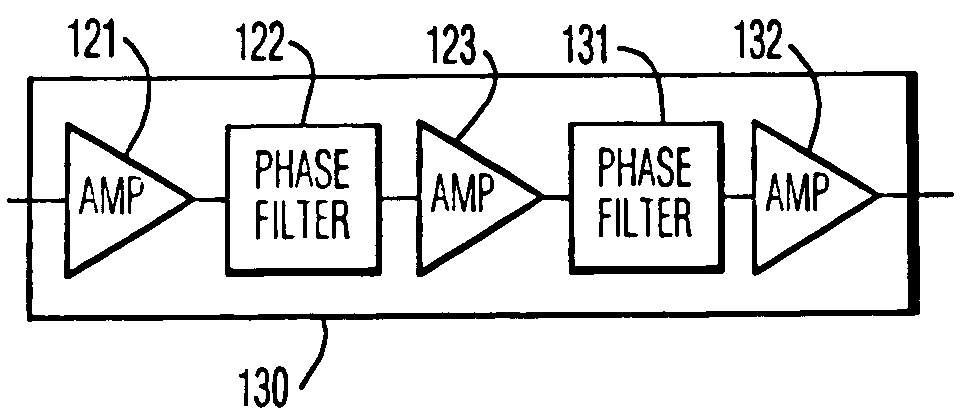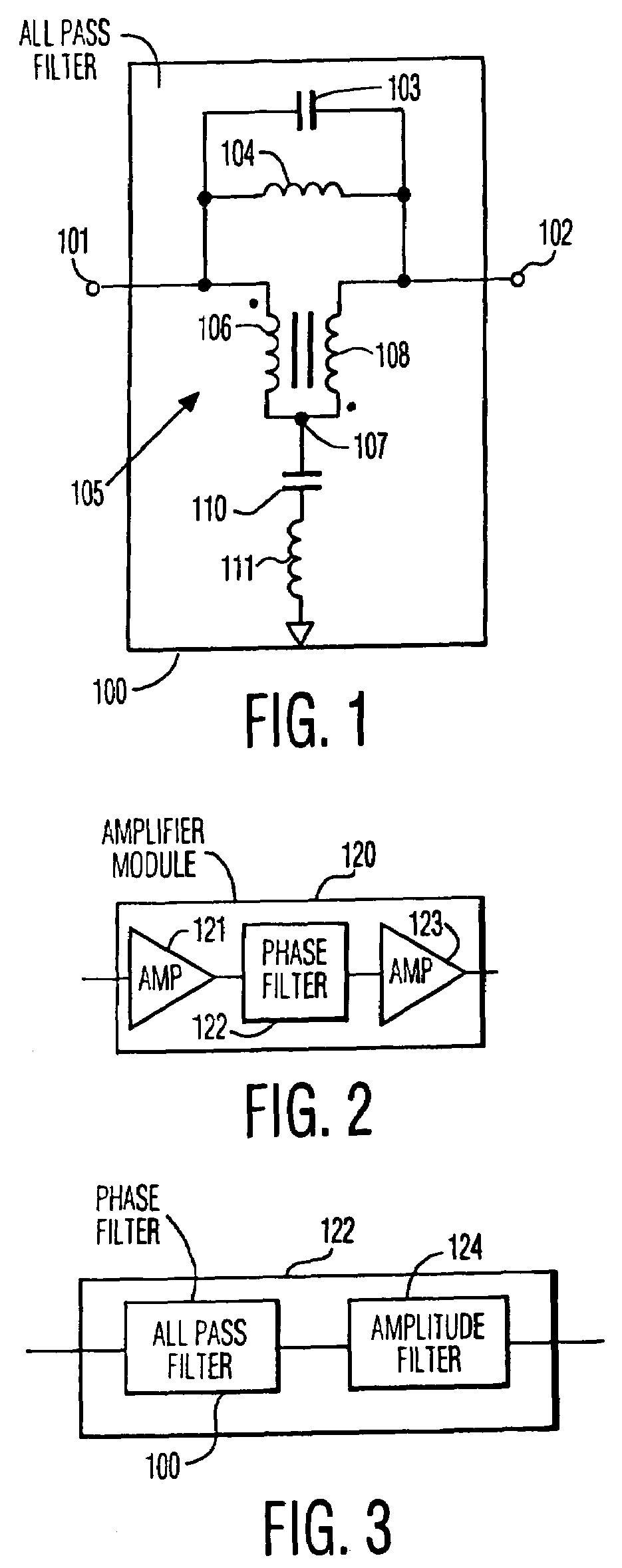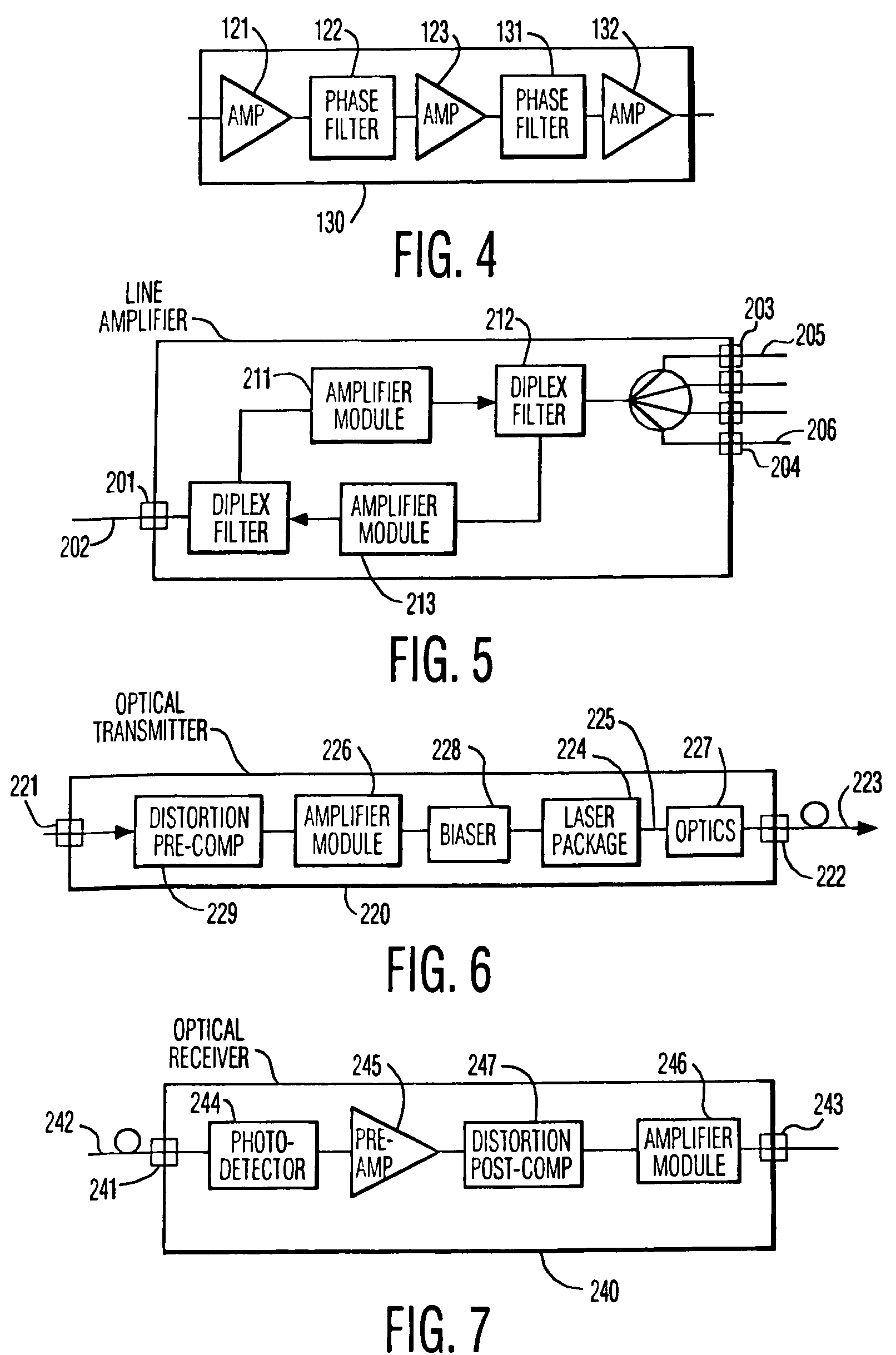Amplifier composite triple beat (CTB) reduction by phase filtering
a phase filtering and composite filter technology, applied in the field of cable television systems, can solve the problems of reducing the range of cable broadcasting, limiting the length of signal transmission, increasing noise in both forward and back directions, etc., and achieve the effect of reducing the accumulated amplitude of the different ctb distortions
- Summary
- Abstract
- Description
- Claims
- Application Information
AI Technical Summary
Benefits of technology
Problems solved by technology
Method used
Image
Examples
Embodiment Construction
[0035]In the following description the same labels in different figures indicate similar elements, but similar elements may be identified by different labels for convenience of description.
[0036]FIG. 1 illustrates an all pass filter 100 of the invention. The all pass filter includes: an input terminal 101 and an output terminal 102; a capacitor 103 connected between the input and output terminals; an inductor 104 connected between the input and output terminals; a transformer 105 with first windings 106 connected in a direction between the first terminal and a third terminal 107 and the second windings 108 connected in the same direction between the third terminal and the output terminal, the first windings 106 and the second windings 108 being connected in series; and a capacitor 110 and an inductor 111 connected in series between the third terminal and ground. The order of the connection of capacitor 110 and inductor 111 is arbitrary. The location of the dots on transformer 105 in...
PUM
 Login to View More
Login to View More Abstract
Description
Claims
Application Information
 Login to View More
Login to View More - R&D
- Intellectual Property
- Life Sciences
- Materials
- Tech Scout
- Unparalleled Data Quality
- Higher Quality Content
- 60% Fewer Hallucinations
Browse by: Latest US Patents, China's latest patents, Technical Efficacy Thesaurus, Application Domain, Technology Topic, Popular Technical Reports.
© 2025 PatSnap. All rights reserved.Legal|Privacy policy|Modern Slavery Act Transparency Statement|Sitemap|About US| Contact US: help@patsnap.com



